Above: The subject of ARHS’ gym floor came up in the presentation under both the school’s problematic historical handling of the Tomahawk symbol, and the costs associated with eliminating the mascot. (image cropped from presentation.)
Last night, the Regional School Committee heard from the Mascot Study Group. The group recommended that it’s time to “retire” the Tomahawk as the Algonquin Regional mascot.
Following the presentation on why, the Athletic Director and an ARHS Booster representative addressed when. Citing the financial impact, they laid out a scenario for a 5-7 year phasing plan to minimize the fiscal impact.
Early in his introduction of the study group’s findings, Algonquin Principal Sean Bevan previewed their “formal recommendation to retire the Tomahawk”.
The group then recapped their review of their research and groundwork. That included studies they looked at that found psychological harm to indigenous others plus the impact on non-Native American students’ perceptions and behavior. (They noted that they couldn’t find any studies showing positive impacts.) Others shared public statements by indigenous groups and representatives on the issue with video clips. (Some slide highlights are below.)
The group acknowledged that the mascot wasn’t rooted in ill intent. But members stated that good intent doesn’t remove the harm it causes. They pointed to a Penobscot Nation Tribal Ambassador speaking in a TED Talk on the successful banning of Native American mascots in Maine. Maulian Dana said:
If we tell you something hurts, you don’t get to decide that it doesn’t.
At the end of last night’s meeting an elected “Anti-Mascot Representative” for the Nipmuc Nation informed the committee of a letter from her government calling for schools to eliminate Native American mascots. She also noted letters from other groups and tribes to the state legislature.
Brittney Little Leafy Walley thanked the committee for addressing the topic. She told them they appeared to be on the right path, but thought they could be more effective.
She expressed dismay that a school named Algonquin Regional hadn’t seemed to be aware of the Nipmuc Nation or local tribes that fall under the Algonquin umbrella:
Your high school sits smack dab in the middle of Nipmuc tribe territory.
She said that the school isn’t in a silo, with 13 other schools making a change in the last year. She highly encouraged them to reach out to the statewide mascot steering coalition to organize a panel as had been done for other districts. She said it was really important that they work on how to move forward, “not just for the 5-7 years to come but for the next seven generations and forward”.
Fiscal impact and phased approach
Following the group’s presentation, Bevan introduced Athletic Director Mike Mocerino and Tom Spataro of the ARHS Boosters. (The Boosters is the volunteer organization that fundraises for the Athletics programs.) Mocerino presented the option of phasing in the cost over 5-7 years. Between the lines, that also appeared to be the position of the school and district administration.
According to Mocerino, making the change quickly would cost from over $300,000-450,000. That is based on some of the physical elements at the school (including refinishing the gym floor and changing scoreboards) and replacing all the uniforms at once. A significant chunk wouldn’t cost “extra” if expenses were delayed. As Bevan explained in his letter to parents:
the majority of these costs are already accounted for in the capital plan and the revolving athletics budget. For example, items such as uniforms are replaced as a routine matter and on a 4-6 year timeline, so those with Tomahawks on them will be replaced over time using funds already earmarked for this purpose. Other items that are scheduled for maintenance or replacement (i.e. resurfacing gym floors, replacing scoreboards, etc.) will similarly be replaced over time at no or minimal additional cost.
Committee member Paul Butka asked to learn what it would cost to shorten that phased approach to 3 years. He said that given work the study group did, he hated to respond we hear you about the harm the mascot creates, “come back in 2029”. His point was echoed by a few others.
The timing of the this issue, and the financial discussion is worth noting. As I shared last week, in late February the Regional School Committee voted on its budget for the next school year. Hearings were held in mid-March, in time to be included in the Town’s Annual Town Meeting Warrants. (Northborough’s Warrant was posted on April 1st for its May 1st meeting.) Which means that adding funds to the FY22 budget for the initiative doesn’t appear to be an option.
Meanwhile, the Study Group apparently drew its conclusions on February 10th. The presentation to the committee was scheduled for April 15th with the committee expected to vote on the decision on April 28th.
Upon questioning, Superintendent Gregory Martineau explained that the committee won’t vote on the timing this month. On the 28th, the committee should only vote on whether or not to accept the study group’s recommendation to retire the mascot.
As for out-of-budget financial support, there was bad news and potentially good news.
While the ARHS Boosters can hold fundraisers, Spataro didn’t show enthusiasm that special funds could be raised in the short term. The Booster explained that hitting up area businesses for donations would be difficult in this economic climate.
Committee member Karen Ares pointed out that there may be some grants available to help. Beth Witcoff, a member of the Study Group, informed the committee that the federal government will be making money available for “districts that engage in active social justice and equity work”. She was hopeful there will be grant opportunities through that.
Staff and Student perceptions
The Study Group’s presentation included information on staff and student perceptions. Bevan shared that students most commonly voiced opinions were:
- “I have never viewed the Tomahawk as a derogatory or used it in a negative sense. We always take pride in being a Tomahawk, and I have not seen it used negatively.”
- “It seems like the mascot doesn’t have a good reason for being the mascot. It’s not alive, it seems like some students just randomly picked it, and it isn’t very interesting. It’s replaceable.”
- “I understand how a school’s history can be important to people, but it is in no way more important than the history and culture of Native Americans. I absolutely believe the mascot should be changed.”
Before and After surveys indicated that when groups were informed about some of the school’s history and the studies about harm, opinions shifted more strongly towards replacing the mascot. Bevan pitched that part of the effort to making a change would focus on teaching students and the community about the reasons.
History of past handling of the issue
The study group’s presentation included a video by the school’s Librarian and a Social Studies teacher on their research into the school’s history. They shared that back in 1996, the district had examined the issue. At that time they heard differing views from two Native American guest speaker. One opined that given the way the symbol was being used, including chants and headdresses, it was appropriation that should be eliminated. Another informed them that they didn’t need to replace the mascot. Instead, they needed to learn about proper, respectful representation. That included not displaying crossed tomahawks and not having them on the floor to be walked on.
At that time a student body vote overwhelmingly favored keeping the symbol. (And, of course, the crossed symbol continued to be used – including on the gym floor – as did student “chants” and other related behavior.)
Next Steps
As I noted, the committee is expected to vote on April 28th. Martineau fully endorsed the recommendation, so will be asking the committee to approve it. Last night, several members expressed their appreciation of the group’s work and/or voiced support for the recommendation. None voiced opposition to the idea. (Three actually served on the 16 person Study Group.)
However, the reason that a vote wasn’t cast last night was to allow the public a chance to chime in first. To do that, fill out this form by Friday, April 23.
But first, if you didn’t view last night’s meeting, you should do that here. You can also read Bevan’s statement issued to parents this morning here. It includes the links to the slideshow and a document with footnotes detailing their research.

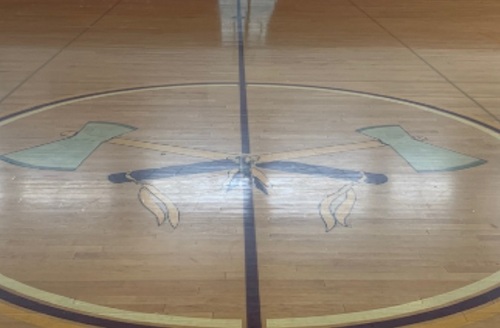
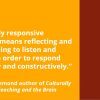
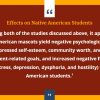
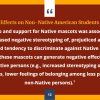
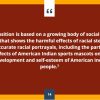
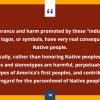

Leave the mascot alone. Everybody needs to stop being a Sensitive Sally. You can’t change history. People need better things to do with their time.